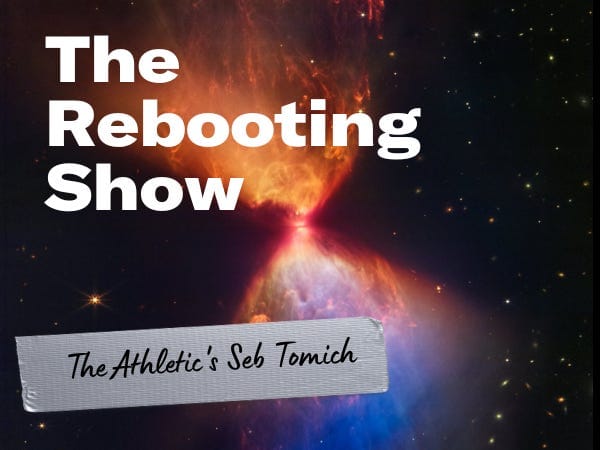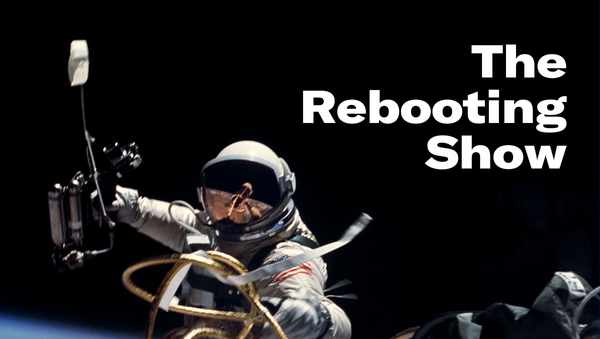Micropayments again
Pay-per-article makes all the sense in the world, unless you're a publisher

The good thing with an early Thanksgiving is you get extra time before the year ends. I took last week off from publishing, mostly because I needed a break in order to focus on all the other stuff that goes into running a solo operation. One needed focus: business. Get in touch if you would like to discuss ways to partner together on sponsorship programs. Check out the sales kit.
Today, I’m taking a look at why micropayments for news content make sense on paper but never work in reality; a discussion with The Athletic’s Sebastian Tomich on building an ads business from scratch; and hopes for a “cultural peace.” First, a message from The Rebooting supporter Omeda.


Data is at the heart of any sustainable publishing business. But collecting data isn’t enough. It has to be accessible, useful and able to allow you to better serve your audience and your business goals. Customer data platforms are the heart of many businesses’ data strategies. A CDP acts as the central repository of information you collect about your audiences, from site activity to email behavior to demographics and more. Omeda, the marketing automation platform, has put together a playbook to understand how to select a CDP and get the most out of it.

The problem with micropayments
Post.news, one of the new Twitter clones, plans to offer access to individual news articles without taking out a full subscription at the publication. There’s a compelling case for micropayments. It goes something like this: News shouldn’t be a luxury product, but ads create perverse incentives and adversarial business models that put the audience last. Subscriptions only appeal to a small sliver of the audience, leading publishers to cater to extremes. Feeds won, so news needs to be monetized in a more flexible way. Hitting a paywall every other story link you click is a shitty experience. Makes sense.
Micropayments to access individual pieces of content are an idea that makes perfect sense on the surface. It would seemingly work for all involved, only the math doesn’t work for one important faction: publishers. That’s why micropayments are “the news idea that won’t die” and destined to “never be a thing in journalism.”
This isn’t without evidence. Several smart publishing people, including former Chartbeat and Scroll founder Tony Haile, have pointed out the, well, checkered history of micropayments. Publisher subscription businesses are built around a bundle of content, not disaggregating content to the unit level. Pulling apart bundles is popular on consumer choice grounds. Why buy the album when you only want the single? It tends not to work out well for the bundler Publisher subscription programs have as much as half or more of their subscribers “asleep,” meaning they’re paying for a product they’re not using. Many people subscribe out of impulse to get a particular piece of content. Some of these churn, but many stick around.
Efforts to come up with modern twists on micropayments have come up short. Blendle was an interesting experiment that ended up not taking off. What works in a market the size of the Netherlands doesn’t scale to big markets. Apple News+ is the closest success case that currently exists. Elon Musk presumably sees Twitter rolling out access to paywalled content as part of its subscription play. Startups like Zette are trying to crack the micropayments puzzle.
Building a micropayments service is difficult. You have to convince publishers to get on board while also building a huge consumer footprint, because without the promise of access to a massive new audience, publishers won’t bite. Post is apparently setting up accounts in publisher brands to encourage them to play ball. That’s not going to go over great, I suspect. Of course, consumers won’t be interested unless many publications are on board. The best shot at a workable micropayments system would have come from Facebook or Google, which would go over like a lead balloon.
What’s more, the price would likely be far higher than the ones people imagine of less than a dollar for an article. It’s the inverse of a companion notion that people should be paid for the use of their data. In that case, the value isn’t as great as people imagine. In the case of micropayments, the payments wouldn’t be as micro as imagined.
Paying for digital content has evolved greatly the past decade. The introduction of dynamic paywalls and freemium models has added needed flexibility. At some point, only because micropayments make sense intuitively, someone will figure out a way to make them work for all sides of the market.
The reliance on sleeper subs – and the incentives it presents to publishers to keep them drowsy – isn’t exactly audience-centric. As Post News founder Noam Bardin puts it, “Selling people something they don’t use is not going to be a healthy business.”

The Athletic’s pivot to ads

Simple models have a lot of advantages because of their clarity. Netflix benefitted from having a single product, with a single business model (subscriptions), at a single price point. But as businesses mature, there are opportunities to serve different customer needs. Enter ads.
The Athletic is on that journey, now part of The New York Times, which has proven that advertising can co-exist in a subscription-first model. The Athletic is adopting this model, having introduced ads in September. Sebastian Tomich, chief commercial officer at The Athletic and a NYT veteran, joined me on The Rebooting Show to discuss the advantages of building an ad model from scratch.
One aspect I found interesting is how The Athletic is trying to get out of the transactional treadmill with deals like the one it struck with Google to underwrite an expansion in The Athletic’s coverage of women’s sports. Seb sees sports affinity as leverage to move beyond audience targeting by allowing brands to align with fan interests. For now, The Athletic is saying no to selling ads through open exchanges.
Check out the full episode on Apple or Spotify. Hit reply with feedback or send me a note at bmorrissey@gmail.com.

Recommendations
What is Yahoo? That was a question that was asked repeatedly in the 2010s as Yahoo tried to find its way after its portal model was left in the dust by Google and then Facebook. Now owned by private equity giant Apollo, Yahoo is in an interesting position, no longer subject to the scrutiny of being a public company, much less viewed as a “bellwether” for the industry, and mostly out of mind. With its long-term partnership and ownership stake in Taboola, Yahoo is making a big bet on being an important player in the next chapter of digital advertising. Like it or not, the ads Taboola serves are fairly lucrative, because people often click them. With plenty of financial backing, Yahoo could again become a very interesting player, seeing as a collection of assets like BuzzFeed is looking very cheap.
Elon Musk clearly dislikes the ad industry, but he’s not alone on that among Silicon Valley founders. After all, he is trying to browbeat advertisers into spending more with Twitter because of… free speech? The logic of an engineering brain simply cannot compute the craziness of the ad industry, not to mention abhorrent the “friction” that is inherent in advertising. Musk wants “entertaining” advertising on Twitter. Judging from the juvenile tenor of his tweets, I suspect the type of advertising he finds best to be fart jokes, slapstick and a dash of SkyMall.
We should all root for a frosty cultural peace, as laid out by Substack co-founder Chris Best. The admittedly vibes-based prediction is, of course, in Substack’s interest, positioning itself as an alternative to wading through Twitter for news and commentary. It’s hard for me to think there isn’t a sizable market for those who don’t want to engage in Twitter vitriol and dunking.
“I knew what equity I had earned. My worth did not depend on being the editor-in-chief of InStyle.” I admire what former InStyle editor-in-chief Laura Brown said about losing her perch. Maybe it’s because I’m middle aged that I’m now more cognizant of how many successful middle-aged people end up cast aside, mostly because they become too expensive in an industry where the economics keep getting more challenging.
The collapse of the crypto boom is having an impact on Miami’s club scene, which eagerly catered to the newly rich. E11ven, the oddly spelled club I somehow didn’t visit while living in Miami, even set up a crypto operation that did $6 million a year in transactions last year. That’s down to $100,000 the past three months. This is the perfect schadenfreude story, and I can imagine the delight of the editor when pitched it.
Credit to Ben Smith for doing a business meeting at Big Nick’s, the now-closed Upper West Side burger joint that used to serve an intimidating one-pound Sumo Burger. That tidbit comes from a When Harry Meets Sally profile of the Ben and Justin Smith, founders of Semafor.
Speaking of old-school burgers, anybody who has lived in NYC for a fair amount of time has good memories of the Corner Bistro. The ales were small but the price was right at $2.

Resources*
Mediaocean is unveiling its advertising outlook for 2023, hosted by analyst Joanna O’Connell. The webinar is on Dec. 7 at noonET. Register here.
OK, my web3 curiosity was likely a bit off, but hear me out on generative AI… It’s worth paying attention to because the holy-shit applications of this tech are already here. I found this a useful guide.
Marketecture is an easy way to get smart about the many ad tech companies out there. Get 20% off a subscription using the code REBOOTING.
Email newsletters aren’t dead yet, despite many attempts to declare their demise. I find Dan Oshinsky’s Not a Newsletter newsletter, which confusingly is an emailed Google Doc about email newsletters. Either way, it’s a great monthly resource for all things email.
*None of these are paid, although Ari and Zach are going to promote The Rebooting to Marketecture’s audience. Mediaocean used to be a client – and hopefully will be in 2023 –and Dan invited me to a newsletter dinner the other week. From time to time, I will include a link to a sponsor who has a product, event or research I find worth checking out. I’ll put an asterisk on those.

Thanks for reading. Hit reply to send feedback.




